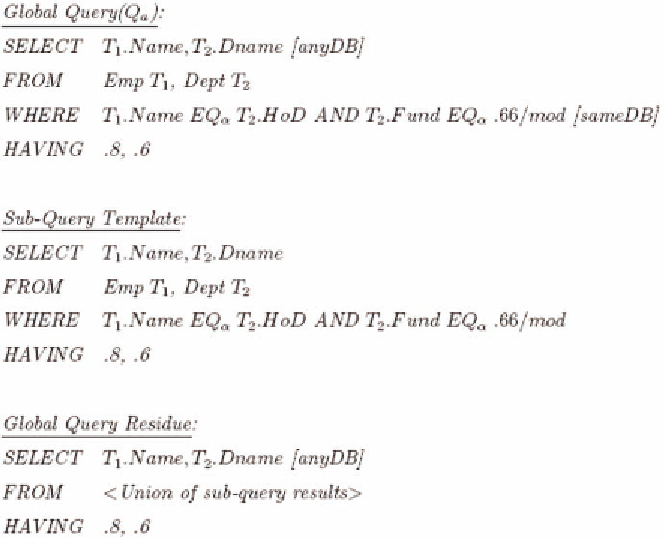Database Reference
In-Depth Information
Figure 5.
Example
Consider the global fuzzy database as given in Table 5 whose component local fuzzy data-
bases are given in Table 4. In the fuzzy query Q
a
(see Figure 5), we show that the join predicate
(
T Name EQ T HoD
1
. . / mo
a
) have been propa-
gated to the sub-fuzzy query template for decomposition of a global fuzzy query that has been formu-
lated using FTS-SQL. Having performed a union of sub fuzzy query results returned by the fuzzy
query agents, a final projection operation on the union result will be required as specified in the global
fuzzy query residue.
.
.
) and selection predicate (
T Fund EQ
2
66
a
2
FTS-SQL queries with WHERE
< …>
[anyDB]
This strategy generates one Global Fuzzy query Residue and multiple Sub-Fuzzy query Templates,
one for each global relation involved in the Global Fuzzy query. In other words, a Global Fuzzy query
with n relations in it's FROM clause, will be decomposed into n Sub-Fuzzy query Templates. This is
necessary because join predicates in Global Fuzzy query can't be propagated to the Sub Queries. Given
below are the sequential steps to derive
Sub-Fuzzy query Templates
and
Global Fuzzy query Residue
from a
Global Fuzzy query
.
1. For each global FTS-relation R involved in the FROM clause we generate its corresponding sub-
queries as follows:

